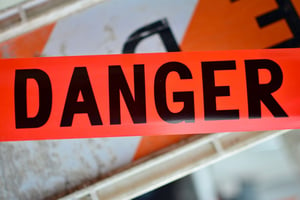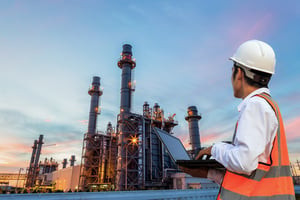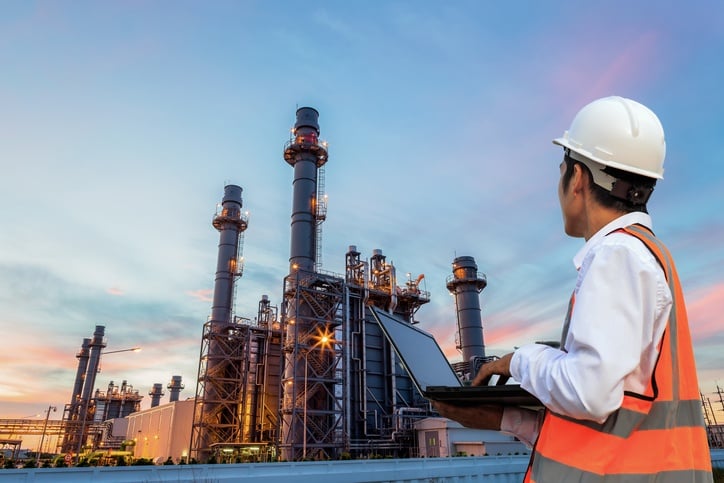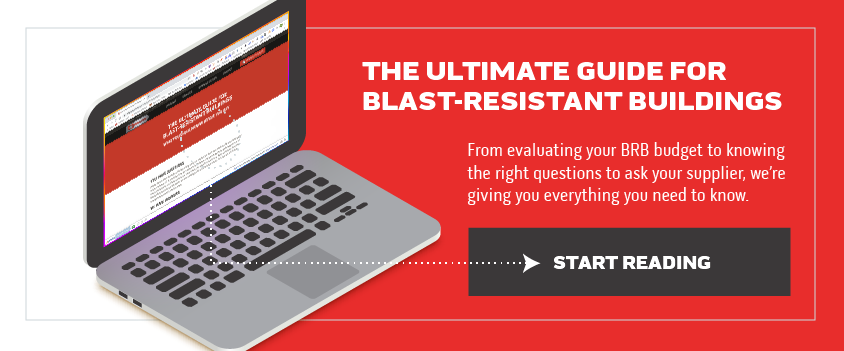Can you afford not to have a blast-resistant building on-site?
 By their very nature, companies in the oil and gas sector handle highly volatile materials. As such, these companies should take the steps needed to protect both their personnel and facilities from the extensive damage that can occur during a blast event. Fortunately, a blast-resistant building (which is also referred to as a blast-resistant module, BRB, or BRM), can be the very solution that companies need to protect personnel and mission critical equipment during and after a blast event.
By their very nature, companies in the oil and gas sector handle highly volatile materials. As such, these companies should take the steps needed to protect both their personnel and facilities from the extensive damage that can occur during a blast event. Fortunately, a blast-resistant building (which is also referred to as a blast-resistant module, BRB, or BRM), can be the very solution that companies need to protect personnel and mission critical equipment during and after a blast event.
The risks during a major blast event to human lives and bodies is high and arguably one of the most important considerations when investing in a blast resistant structure.
What Is A BRB?
A blast-resistant building is a structure that has been designed to withstand significant blast events. These buildings are often constructed with thick steel walls, as well as interior features and fixtures that are designed to also withstand the heightened psi levels associated with small to large blast events. With this in mind, it is important to note that blast-tested buildings are usually given specific psi ratings. Knowing what rating your facility needs, will depend on many factors, such as the type of structure, the likelihood that it will experience a blast event, and its proximity to different assets, equipment, and materials. For example, a laboratory BRB that is near a blowdown stack might need an 8 psi rating, while a structure that is located closer to the perimeter of your facility might only need a 4 or 5 psi rating. (These are hypothetical and don't represent actual recommendations.)
How Does a Blast Effect The Human Body?
The effects of a blast event on the human body will depend on a number of factors.
- The proximity of the person to the center of the blast event.
- The terrain and surroundings that are within the blast event.
- The cause of the blast event (i.e. the type of gas or other material that caused the event).
- The intensity and frequency of displacement waves.
With these factors in mind, it is important to note that the human body can typically survive high blast overpressure. For example, a 5 psi blast overpressure can rupture eardrums, while lung damage can occur at an approximately 15 psi blast overpressure. But the final factor that must be considered when taking precautions to protect personnel during a blast event, is the impact of blunt force trauma to the human body. Injuries like these can occur with overpressure as low at 1-2 psi, when windows may shatter and debris is thrown. Crush injuries may occur at slightly higher response levels when the structural integrity of the building begins to fail. In a blast event, the human body might be thrown, large objects might be propelled at a person, and light objects can quickly become speeding projectiles. Fortunately, a BRB is designed to protect people from the aforementioned injuries.
Do I Need A BRB?
A BRB is strategically designed on the exterior and the interior to protect personnel from the potential harmful effects of a blast event.  A BRB vendor should conduct tests to ensure that nonstructural items, such as light fixtures or ceiling finishes, have been properly constructed so that they do not become projectiles (or shrapnel) during a blast event. In this vein, a BRB that has the right psi ratings for its intended use and location within your facility, can not only protect personnel during blast events, but it can also save lives and reduce the risk of nonstructural items causing bodily harm in the aftermath of a blast event.
A BRB vendor should conduct tests to ensure that nonstructural items, such as light fixtures or ceiling finishes, have been properly constructed so that they do not become projectiles (or shrapnel) during a blast event. In this vein, a BRB that has the right psi ratings for its intended use and location within your facility, can not only protect personnel during blast events, but it can also save lives and reduce the risk of nonstructural items causing bodily harm in the aftermath of a blast event.
The Bottom Line: Blast-Resistant Buildings Save Lives
The moral of the story is simple, blast-resistant buildings can help save the lives of personnel working at oil and gas facilities. Additionally, a BRB can help reduce trauma-based injuries that are otherwise experienced during a blast event. To learn more about what type of BRB your facility might need, contact a trusted source, such as RedGuard.
To get more details about the effects of a blast event and to find out how the industry for blast-resistant buildings is expected to evolve, download our white paper, or read our ultimate guide for blast-resistant buildings.
Carreen Gibbons
Carreen Gibbons is the Communications Specialist at RedGuard. With a natural curiosity toward technical subjects and a love of learning new things, she writes content for the SiteBox Storage and RedGuard websites and spends her days learning new things about the industries that the companies serve.





